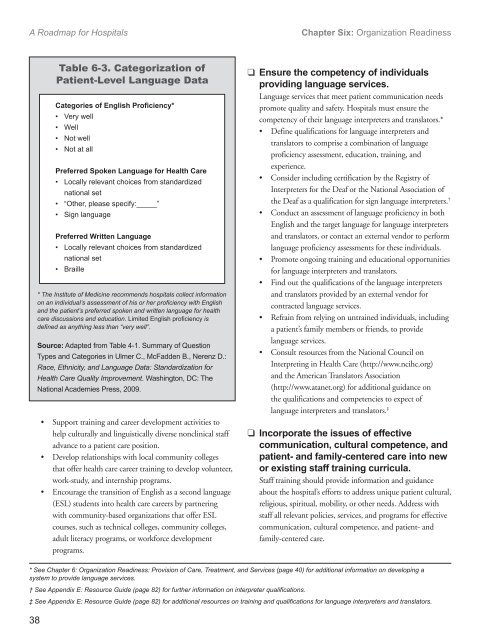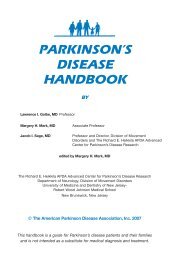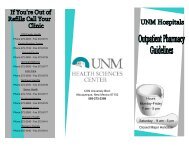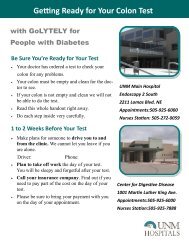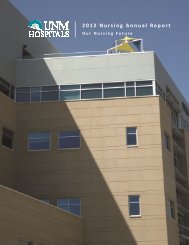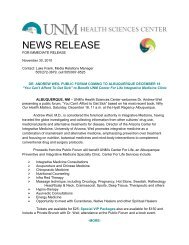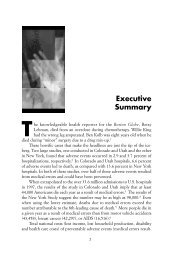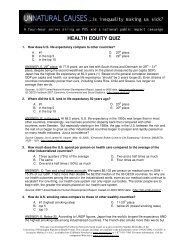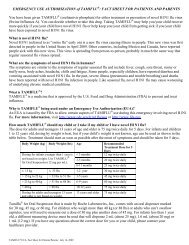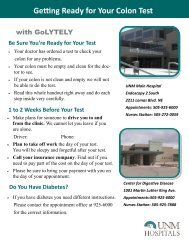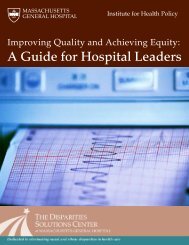Advanced Effective Communication, Cultural Competence, and ...
Advanced Effective Communication, Cultural Competence, and ...
Advanced Effective Communication, Cultural Competence, and ...
You also want an ePaper? Increase the reach of your titles
YUMPU automatically turns print PDFs into web optimized ePapers that Google loves.
A Roadmap for Hospitals<br />
Chapter Six: Organization Readiness<br />
Table 6-3. Categorization of<br />
Patient-Level Language Data<br />
Categories of English Proficiency*<br />
• Very well<br />
• Well<br />
• Not well<br />
• Not at all<br />
Preferred Spoken Language for Health Care<br />
• Locally relevant choices from st<strong>and</strong>ardized<br />
national set<br />
• “Other, please specify:_____”<br />
• Sign language<br />
Preferred Written Language<br />
• Locally relevant choices from st<strong>and</strong>ardized<br />
national set<br />
• Braille<br />
* The Institute of Medicine recommends hospitals collect information<br />
on an individual’s assessment of his or her proficiency with English<br />
<strong>and</strong> the patient’s preferred spoken <strong>and</strong> written language for health<br />
care discussions <strong>and</strong> education. Limited English proficiency is<br />
defined as anything less than “very well”.<br />
Source: Adapted from Table 4-1. Summary of Question<br />
Types <strong>and</strong> Categories in Ulmer C., McFadden B., Nerenz D.:<br />
Race, Ethnicity, <strong>and</strong> Language Data: St<strong>and</strong>ardization for<br />
Health Care Quality Improvement. Washington, DC: The<br />
National Academies Press, 2009.<br />
• Support training <strong>and</strong> career development activities to<br />
help culturally <strong>and</strong> linguistically diverse nonclinical staff<br />
advance to a patient care position.<br />
• Develop relationships with local community colleges<br />
that offer health care career training to develop volunteer,<br />
work-study, <strong>and</strong> internship programs.<br />
• Encourage the transition of English as a second language<br />
(ESL) students into health care careers by partnering<br />
with community-based organizations that offer ESL<br />
courses, such as technical colleges, community colleges,<br />
adult literacy programs, or workforce development<br />
programs.<br />
❑ Ensure the competency of individuals<br />
providing language services.<br />
Language services that meet patient communication needs<br />
promote quality <strong>and</strong> safety. Hospitals must ensure the<br />
competency of their language interpreters <strong>and</strong> translators.*<br />
• Define qualifications for language interpreters <strong>and</strong><br />
translators to comprise a combination of language<br />
proficiency assessment, education, training, <strong>and</strong><br />
experience.<br />
• Consider including certification by the Registry of<br />
Interpreters for the Deaf or the National Association of<br />
the Deaf as a qualification for sign language interpreters. †<br />
• Conduct an assessment of language proficiency in both<br />
English <strong>and</strong> the target language for language interpreters<br />
<strong>and</strong> translators, or contact an external vendor to perform<br />
language proficiency assessments for these individuals.<br />
• Promote ongoing training <strong>and</strong> educational opportunities<br />
for language interpreters <strong>and</strong> translators.<br />
• Find out the qualifications of the language interpreters<br />
<strong>and</strong> translators provided by an external vendor for<br />
contracted language services.<br />
• Refrain from relying on untrained individuals, including<br />
a patient’s family members or friends, to provide<br />
language services.<br />
• Consult resources from the National Council on<br />
Interpreting in Health Care (http://www.ncihc.org)<br />
<strong>and</strong> the American Translators Association<br />
(http://www.atanet.org) for additional guidance on<br />
the qualifications <strong>and</strong> competencies to expect of<br />
language interpreters <strong>and</strong> translators. ‡<br />
❑ Incorporate the issues of effective<br />
communication, cultural competence, <strong>and</strong><br />
patient- <strong>and</strong> family-centered care into new<br />
or existing staff training curricula.<br />
Staff training should provide information <strong>and</strong> guidance<br />
about the hospital’s efforts to address unique patient cultural,<br />
religious, spiritual, mobility, or other needs. Address with<br />
staff all relevant policies, services, <strong>and</strong> programs for effective<br />
communication, cultural competence, <strong>and</strong> patient- <strong>and</strong><br />
family-centered care.<br />
* See Chapter 6: Organization Readiness: Provision of Care, Treatment, <strong>and</strong> Services (page 40) for additional information on developing a<br />
system to provide language services.<br />
† See Appendix E: Resource Guide (page 82) for further information on interpreter qualifications.<br />
‡ See Appendix E: Resource Guide (page 82) for additional resources on training <strong>and</strong> qualifications for language interpreters <strong>and</strong> translators.<br />
38


